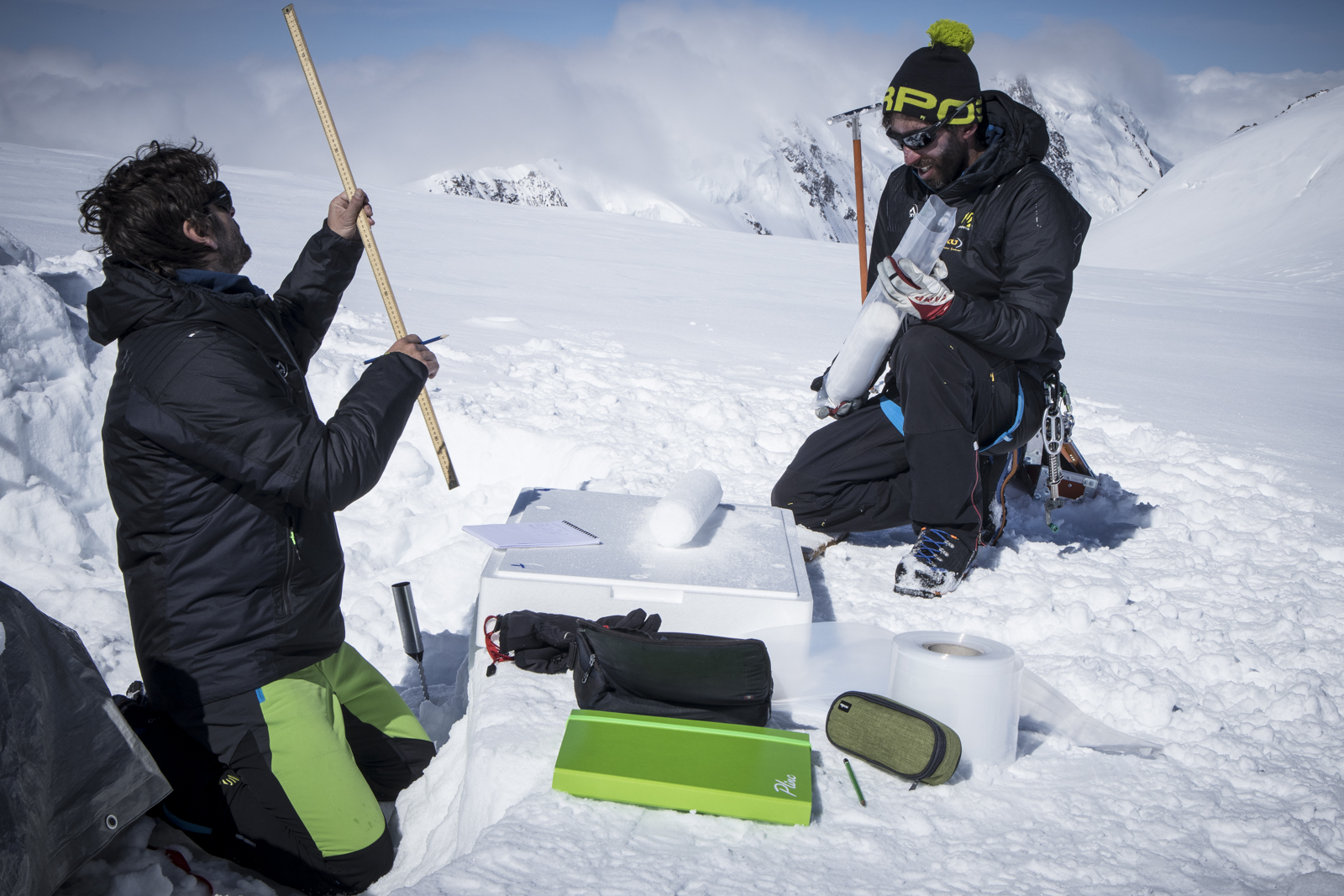Successful “ice memory” mission on Monte Rosa!
Successful mission for the international Ice Memory project on Monte Rosa. Working on the Gorner Glacier for five days at an altitude of 4,500 meters, scientists took two surface ice cores and two cores over 82 meters deep. In the segment closest to the rock, the sample could contain information about the climate and environment up to 10,000 years ago. If analysis confirms this, it would mean that the oldest ice in the Alps will be preserved in Antarctica.

The mission was organized by the Institute of Polar Science of the National Research Council and Ca’ Foscari University of Venice in collaboration with the Swiss research center Paul Scherrer Institut.
Ice Memory is an international program that aims to provide, for decades and centuries to come, archives and data on the history of climate and the environment that are fundamental not only for science, but also for policies for the sustainability and well-being of humanity. To this end, he aims to create an ice ‘library’ in Antarctica: an archive of samples from glaciers currently in danger of shrinking or disappearing.
“The expedition was a success: the team extracted two ice cores over 80 meters deep from a very important site because it keeps the information of climate and environment of the last 10 thousand years. – says Carlo Barbante, director of CNR-Isp and professor at Ca’ Foscari – The team worked well despite the very harsh conditions, with days of strong wind and snow. Now this precious archive of the climatic history of the Alps can be preserved for the future”.
“Ice Memory represents for Ca’ Foscari one of the most significant activities in the field – comments Tiziana Lippiello, Rector of Ca’ Foscari University Venice – Our University was among the first to engage in the study of climate change and its effects in different fields (economic, scientific, social, cultural). Today this theme represents a real emergency. To face it, understanding its causes and developing possible solutions, both research and teaching are needed. With the Ice Memory project, Ca’ Foscari is ready to give a relevant contribution together with CNR and other international partners”.
“Ice Memory is a transgenerational project that will involve those who today are children and tomorrow will become scientists – says Fabio Trincardi, director of the Department of Earth System Sciences and Environmental Technologies of the CNR – if we lost archives like this one, the memory of how man has altered the atmosphere would be lost. Let’s try to preserve it for those who will study it when we will not be there”.
The team departed Tuesday, June 1, from Alagna Valsesia, in the province of Vercelli, at the foot of Mount Rosa. The researchers acclimatized for two nights at the Capanna Gnifetti refuge, at 3,600 meters above sea level, and then climbed up to Colle Gnifetti for deep core drilling. Today the return to Alagna with the samples to be analyzed and preserved.
For the whole duration of the mission, the scientists stayed at Capanna Margherita, the highest refuge in Europe, built on a rocky peak 128 years ago to contribute to scientific research in the field of physiology first and then also in climatology and environmental sciences. Thanks to the support of Rifugi Monterosa to the project, Capanna Margherita has been opened specifically to host scientists. It will reopen from the second half of June to welcome mountaineers.
Gorner Glacier is the second largest glacier in the Alps. With an area of about 40 km2, it extends from 2190 to 4600 meters above sea level. Compared to its extent, a volume of about 4.9 cubic kilometers was calculated in 2017. Since the mid-1900s, the glacier has lost about 40% of its area, following a retreat of its front of about 3.3 kilometers.



